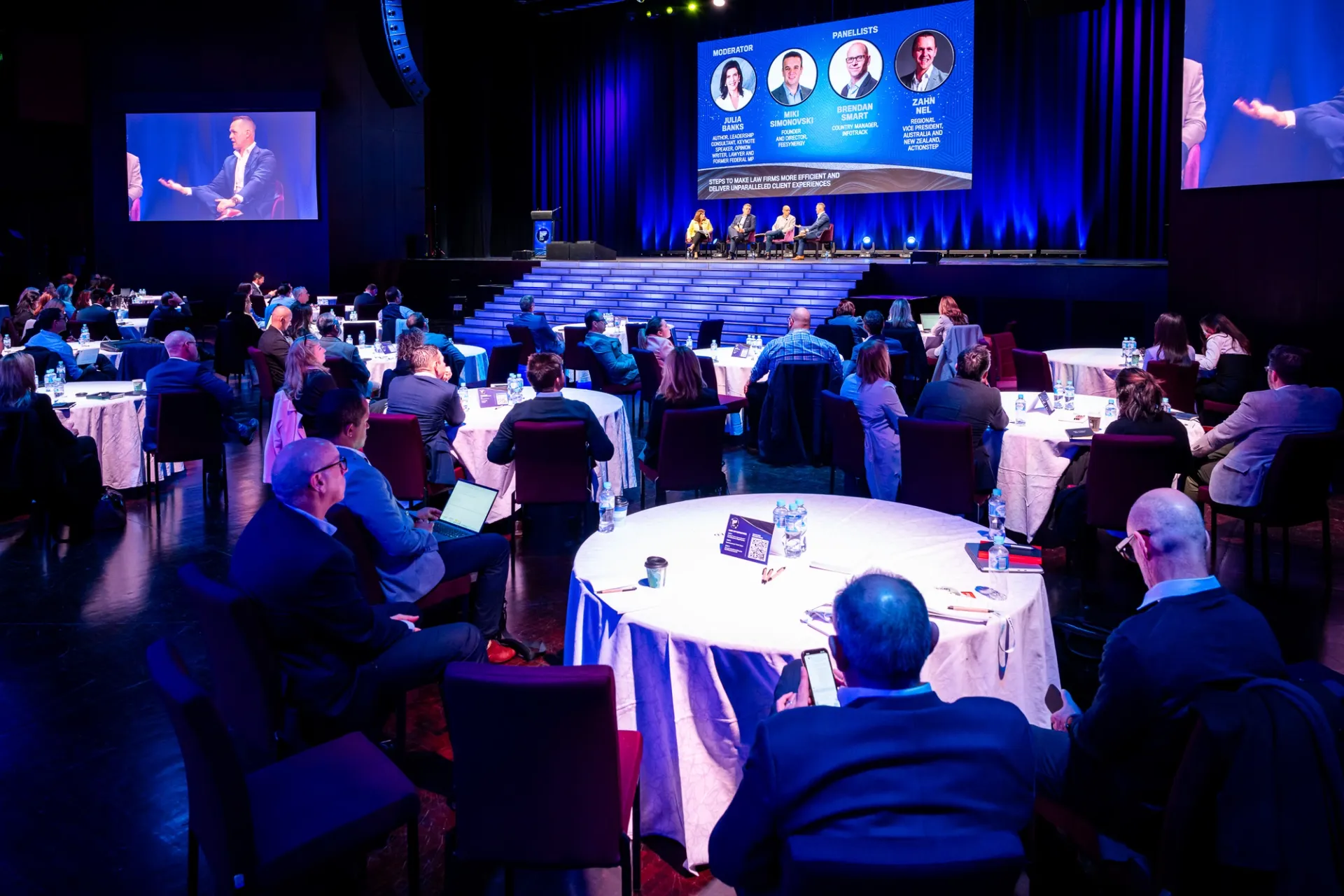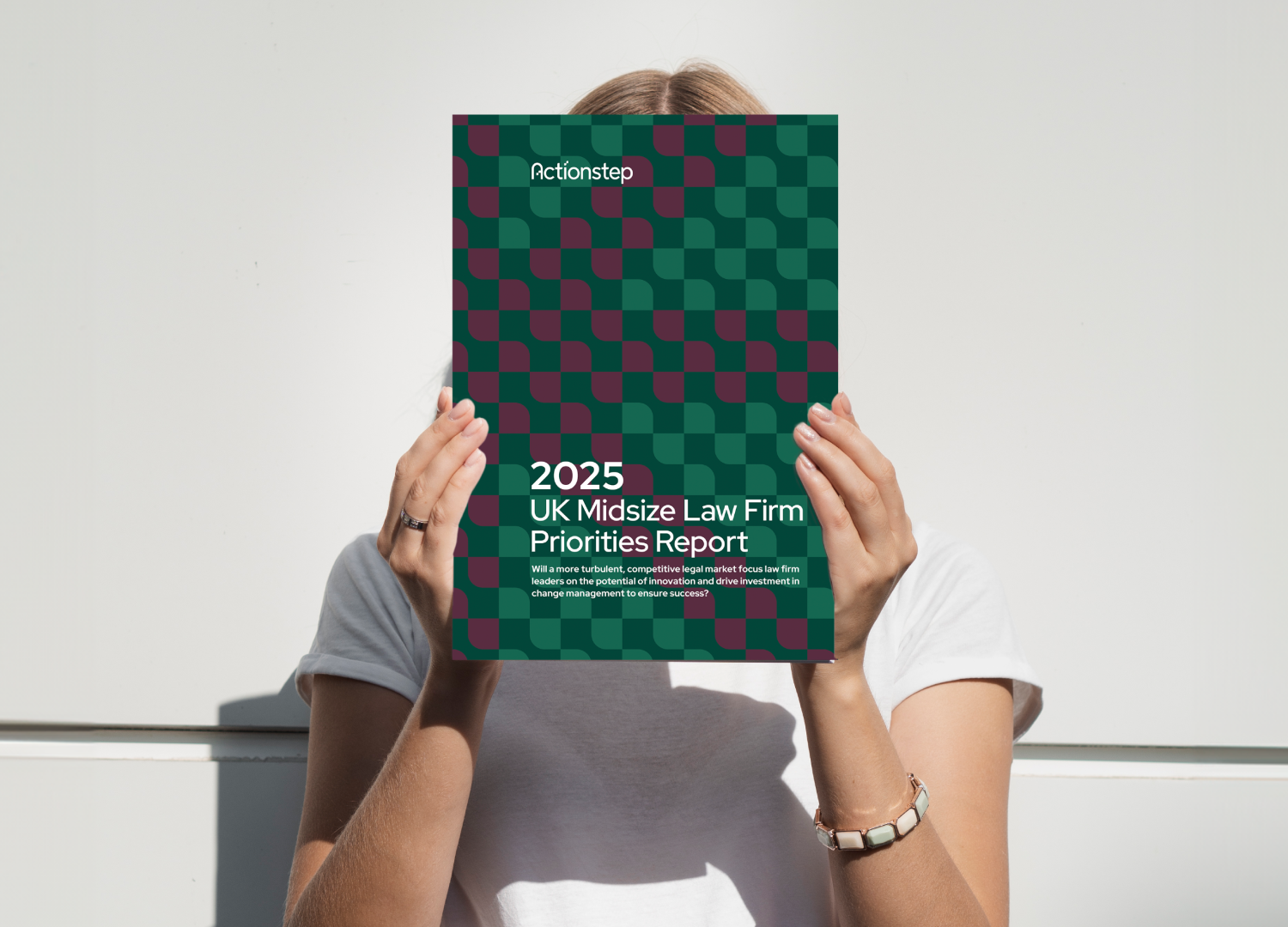3 Key Themes for Law Firm Leadership in the Digital Age

Three Essential Challenges Law Firm Leaders Must Address for Future Success
The inaugural Partner Summit, hosted by Lawyers Weekly, brought together emerging and established partners to rethink traditional management and enhance their business development, emotional intelligence, and innovation capabilities. Three key themes emerged, highlighting crucial areas law firm leaders need to focus on including: technological advancements, boosting efficiency and adopting client-centric strategies, and leadership and team challenges.
Technological Advancement and Its Impact on Law Firms
Technology is advancing at an unprecedented pace, presenting law firms with both opportunities and challenges. For some, this technological evolution might seem abrupt, it’s essential to recognize that we are still at the early stages of a technology-first approach in the legal industry, with much more to come.
Our Australian Law Firm Priorities Report revealed that 39% of firms prioritize digital transformation, with automation and AI as key drivers. However, 41% of firms acknowledge a significant need for further investment, particularly in document automation and legal process automation. This highlights a gap in foundational technology and underscores a critical area for improvement.
Professor Richard Susskind OBE KC (Hon) predicts that while technology won’t cause immediate drastic changes in law firms, it will drive a radical long-term shift. He foresees that in the next five years, law firms will adopt more tools for successful automation. Susskind emphasizes the importance of law firms envisioning a future where clients have access to tools that solve problems traditionally addressed by lawyers. For instance, clients might soon seek AI-based legal advice, leveraging vast databases of case law and legislation. This scenario will compel law firms to innovate continually in how they address new client problems. The key here is to look at technology as a benefit, rather than competition. Integrating automation technology will help your firm appeal to new clients and stay ahead of your competitors.
Understanding where to start with modernizing your law firm and adopting new technology can be daunting. How do you choose the right technologies, manage change effectively, and meet client demands? Actionstep put together a comprehensive guide filled with practical insights, best practices, and actionable steps for successful technology adoption and use. By automating processes and adopting a client-centric approach, you can build a platform build for continuous innovation.
Enhancing Law Firm Efficiency and Client Experience
Making your law firm more efficient and capable of delivering exceptional client service can be challenging. Enhancing client satisfaction is a top priority for many law firms, yet several struggle to implement effective strategies. Only 27% percent of firms have documented client standards or provide client service training. This gap between recognizing the importance of client satisfaction and actively investing in measures to ensure it underscores the untapped potential within these firms to build stronger client relationships.
A panel discussion with Zahn Nel from Actionstep, Brendan Smart from InfoTrack, and Miki Simonovski from FeeSynergy, moderated by Julia Banks, emphasized the importance of systems and governance in meeting client expectations. They recommended documenting client standards and providing tailored training to ensure consistent and high-quality service. Implementing these practices minimizes the risk of misunderstandings and enhances transparency and accountability, providing clients with a timely, consistent, and quality experience.
Mark Bouris, Executive Chairman at Yellow Brick Road, discussed the necessity for law firms to adapt to changing client expectations and disruptive business models from another perspective. Clients have emotional drivers, ensuring transparent communication and delivering with certainty are crucial for meeting and exceeding expectations. Bouris reiterated that maintaining a clear business mindset, written processes, and a dynamic culture, law firms can navigate these changes and continue to provide exceptional client service.
Leadership, Collaboration, and Managing Change
Building and sustaining high-performing teams is a significant challenge for law firm leaders. With five generations in the workforce and evolving employee expectations, maintaining a strong organizational culture is crucial.
Ivan Cleary, Head Coach of the Penrith Panthers, shared his expertise in managing high-performing teams under high expectations. It’s important to create a cohesive and supportive culture that amplifies talent. Cleary highlighted the necessity of driving cultural change within teams and instilling explicit expectations for organizational culture. As he succinctly put it, “Strong culture multiplies talent, weak culture divides it.”
The responsibility of building and sustaining high-performing teams lies with law firm partners. In a panel discussion, Richard Wood and Andrew Lacey, Managing Principals at Gilchrist Connell and McCabes, respectively, stressed the need for flexibility and proactive management. Partners’ business concerns have broadened, requiring them to balance day-to-day workloads with the cultural and well-being aspects of their firms. They both emphasized the dangers of rigidity in management, advocating for open communication, inclusive decision-making, and adaptability to generational differences among staff.
This was amplified in our 2024 Australian Midsize Law Firm Priorities Report which found talent recruitment and retention are critical priorities for 52% of midsize law firms. However, 41% of legal professionals experience high or extremely high levels of stress due to understaffing, lack of resources, and long hours. Those under significant work-related stress are 4.1 times more likely to leave their firms. Additionally, professionals feeling disconnected from senior leaders, or their teams are significantly more likely to leave. This backs the need for law firm leaders to foster connection and collaboration to alleviate stress, reduce long working hours, and maintain high-performing teams.
While there are clear challenges facing the legal industry, law firm leaders have a huge opportunity to make an impact within their firm. Leverage the resources around you to learn how to apply industry best practices in your law firm and start seeing the benefits surface.
Here’s your checklist that will enable you to tackle quick opportunities for improving your law firm efficiency and satisfaction internally and externally:
Evaluate Your Technology Ecosystem
- Assess current technology usage.
- Determine adaptability and scalability for future advancements.
Create a Technology Adoption Roadmap
- Develop a detailed plan for integrating new technologies.
- Include steps for managing change effectively.
Consider Client Perspective on Technology
- Identify problems current technology solves for clients. What are the gaps?
- Find ways to enhance client experience through technology improvements.
Maintain Consistency and Transparency for Clients
- Document and standardize client service protocols.
- Provide comprehensive training for all staff.
- Establish systems for collecting and implementing client feedback.
Foster a Supportive Organizational Culture
- Encourage collaboration and open communication.
- Build a positive and inclusive workplace environment.
Implement Flexible Workload Management
- Develop strategies for balanced workload distribution.
- Promote work-life balance to reduce stress and improve productivity.
While there are clear challenges facing the legal industry, law firm leaders have a huge opportunity to make an impact within their firm. Leverage the resources around you to learn how to apply industry best practices in your law firm and start seeing the benefits surface.


